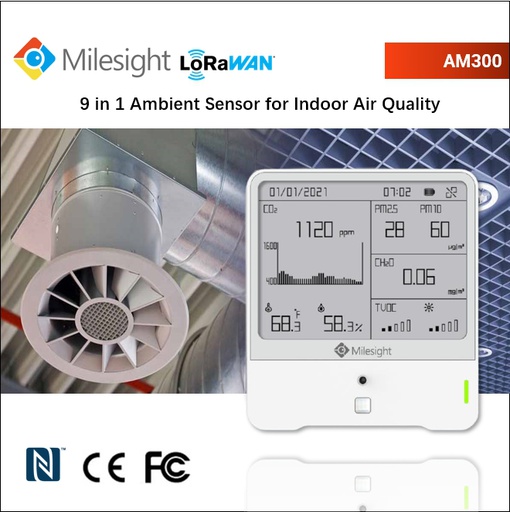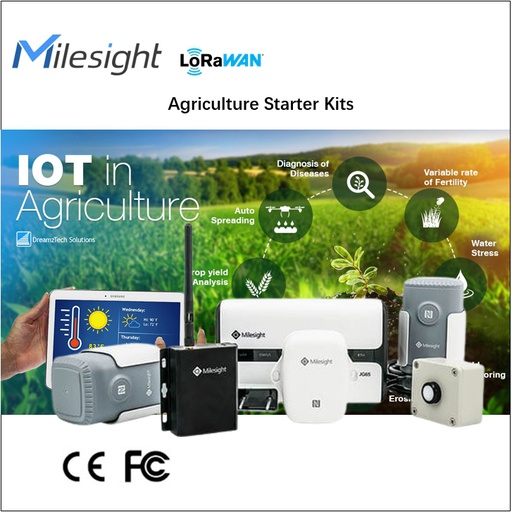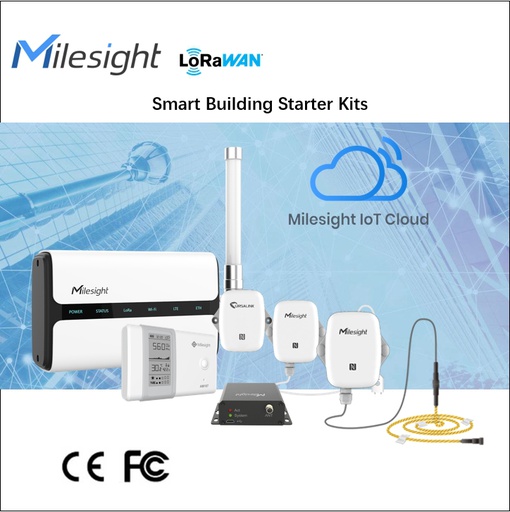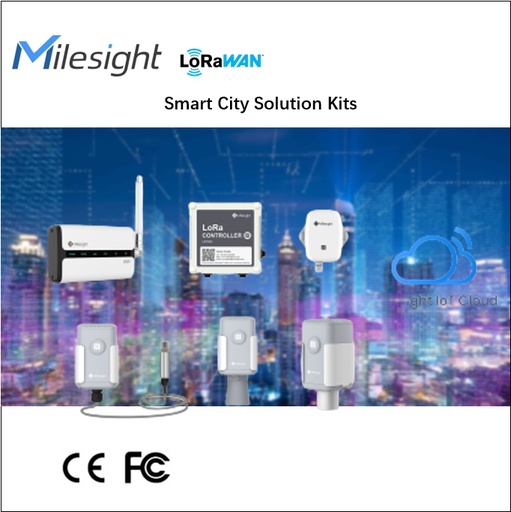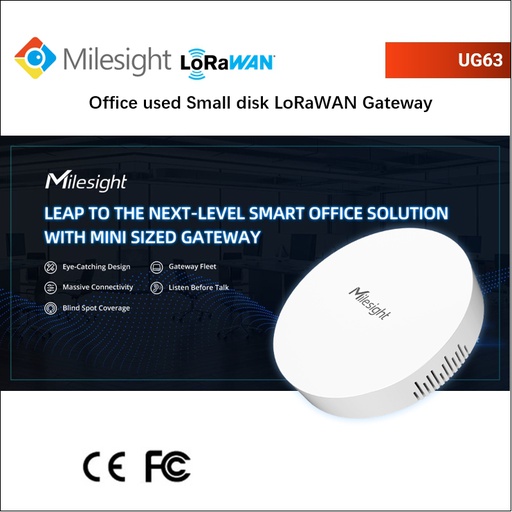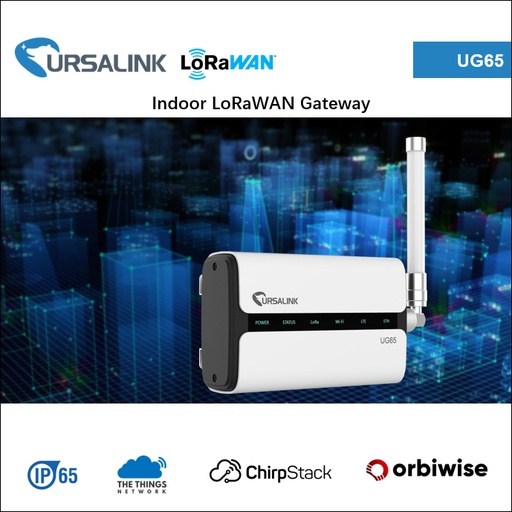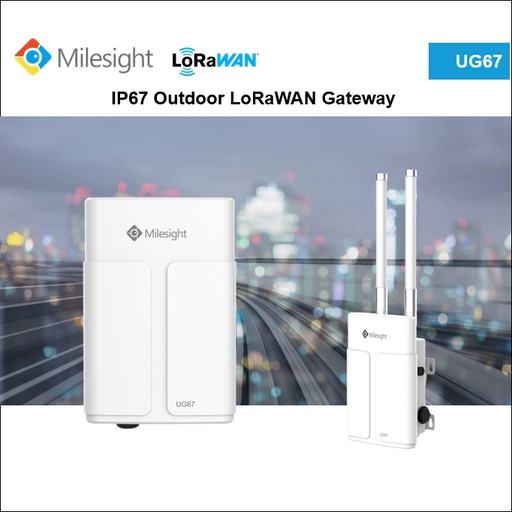Why is it important to meet IAQ standards?
IAQ is the key metric for satisfying people’s wellness and building management requirements. Good IAQ contributes to a comfortable environment for occupants, work efficiency of staff, and it also brings great influences to sustainable buildings.
- Virus spreading: Evidence shows that Covid-19 is often transmitted through infectious air particles in crowded indoor spaces, and IAQ can help prevent the transmission of airborne disease.
- Green building: Since the HVAC systems account for the largest of energy consumption in most buildings, the HVAC operations using air quality data can definitely help you reduce energy usage.
- Occupant comfort: Clean air is recognized as important for the health and well-being of all building occupants. Published research indicates an 11% increase in staff productivity as a result of increased fresh air to the workplace and a reduction in air pollutants.
Where do indoor air pollutants come from?
The pollutants can be anything from chemicals and gases to living organisms like mold, thus IAQ begins with monitoring exposure to those pollutants in the below table.
What are indoor air quality standards?
There are no unified standards of indoor air quality. For example, the American Conference of Governmental Industrial Hygienists (ACGIH) has given a threshold limit value of 25 ppm for an 8-hour workday, while the National Institute for Occupational Safety and Health (NIOSH) has estimated a recommended exposure limit of 35 ppm to carbon monoxide.
The recommended thresholds based on various air quality index (AQI) are summarized here: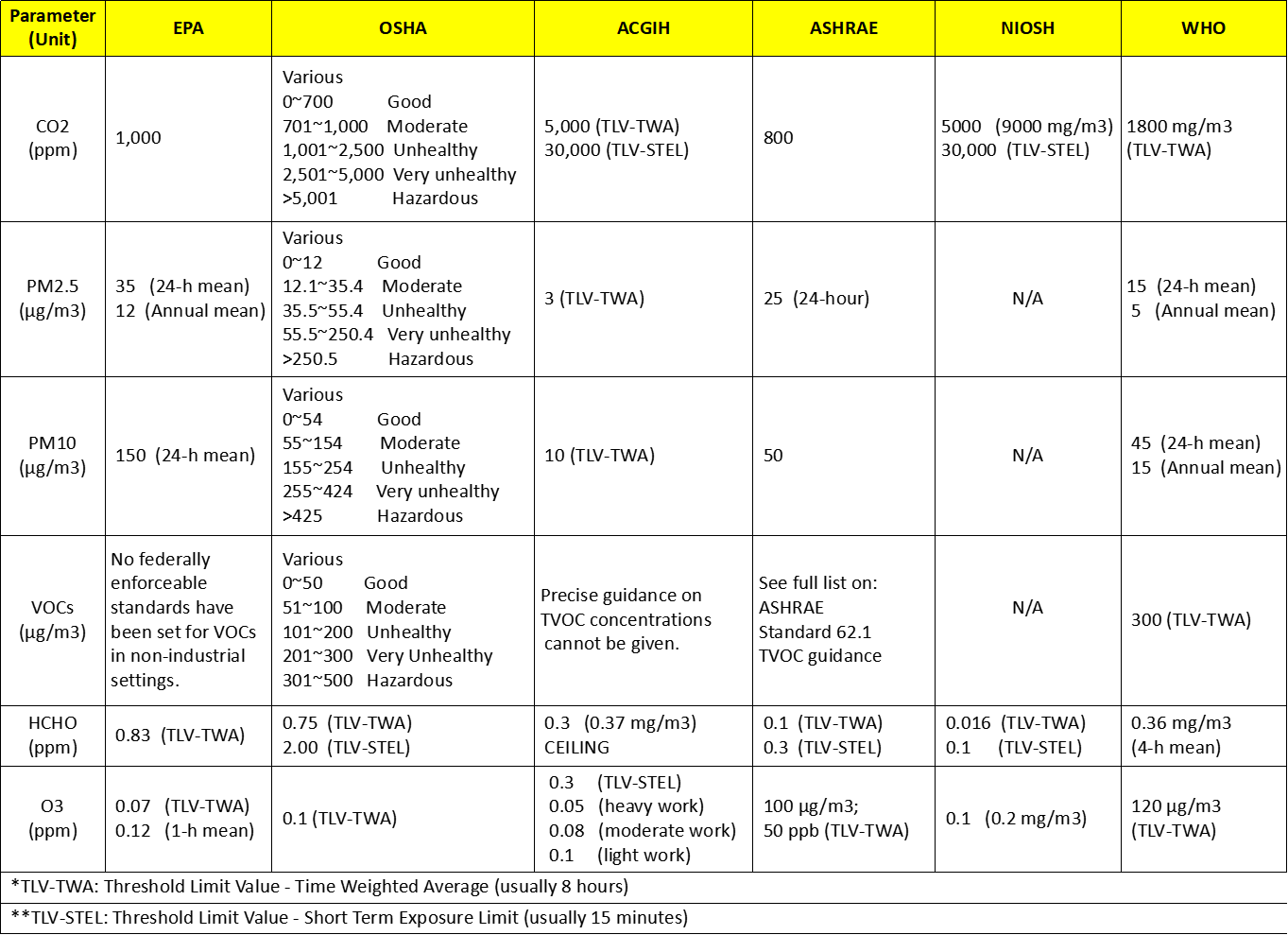
Sourcing:
- Environmental Protection Agency(EPA);
- Occupational Safety and Health Administration(OSHA);
- World Health Organization(WHO);
- American Society of Heating, Refrigerating and Air-Conditioning Engineers(ASHRAE);
The most 2 important IAQ standards to meet
1) Keep carbon dioxide (CO2) levels at or below 1,000 ppm to ensure efficient ventilation.
Since carbon dioxide is exhaled by people at predictable levels, the CO2 concentration can be served as an indicator of indoor air quality. ASHRAE currently recommends that concentrations of carbon dioxide be maintained below 1,000 ppm in classrooms and 800 ppm in offices. In general, by meeting that recommended standard, you can create an ambient condition acceptable to most individuals.
2) Make sure particulate levels are below 10 µg/m3 to prove out proper air filtering mechanism.
ASHRAE recommends upgraded air filters with at least a MERV 13 rating to capture aerosol as a virus might have connected to it. MERV 13 filter is at least 85% efficient at removing particulates greater than 1 micron as they pass through the HVAC system. Through the way of monitoring air pollutant PM2.5, you can know whether your filters are well filtering the air. Additionally, evidence shows there is a significant positive correlation between PM2.5 concentration and lung cancer mortality as well as in COVID-19.
Other pollutants’ thresholds to monitor and manage
Various pollutants such as fine dust, carbon dioxide, formaldehyde, etc, exist in indoor spaces. These pollutants can harm a person’s health and cause sleepiness, headaches, and decreased concentration.
- Formaldehyde: 0.1 – 0.3 ppm
Formaldehyde(HCHO) is one of the most common toxic pollutants found in indoor air, which is commonly produced by woods, particle boards, and poor standards of building materials. It has been listed as a primary carcinogen by the World Health Organization. Increasing the supply of fresh air by ventilation is the most straightforward approach to dilute its density.
- Particulate Matter (PM2.5): 0 – 12 µg/m3
Particulate matter or “dust” in the air with a diameter of 2.5 micrometers or less, referred to as PM2.5. They are small enough to directly invade the bronchus and lungs. Upgrading the HVAC system with MERV-13 or HEPA-rated filters can remove more virus-containing particles.
- Particulate Matter (PM10): 0 – 54 µg/m3
Some coarse dust with an aerodynamic diameter of fewer than 10 microns is known as PM10. Owing to its tiny size, PM10 can be breathed deeply in the respiratory system and consequently cause inflammation, asthma, and other diseases. Similar to PM2.5, using the correct air filters can ensure the particulates are captured in efficacy.
- Volatile Organic Compounds (VOCs): 0 – 50 ppm
Volatile organic compounds (VOCs) are commonly organic chemicals of low molecular weight with a high vapor pressure that easily evaporate at room temperature. Many VOCs are human-made chemicals being used to clean. The effective approach to reduce VOC emissions is applying source control like properly storing chemicals or supporting air purifiers in the air clean system.
- Ozone (O3): 0 – 10 ppm
Although ozone pollution is an air pollutant most encountered outdoors, the gas also infiltrates the indoor environment. Volatile organic compounds are the most common sources of ozone. Same as VOCs, running an air purifier that can reduce exposure to these gases.
Click for INDOOR AIR QUALITY(IAQ) SOLUTION
With a proxy, you can fully understand how to access, improve and maintain the air quality through monitoring thresholds. The LoRa based IoT sensor monitors major air pollutants, such as total volatile organic compounds, particulate matter, carbon dioxide. Additional relevant environmental parameters, such as humidity, temperature, light, and barometric pressure are also observed since these are associated with the comfort level of the occupant.
By creating a simple IAQ monitoring system, a wireless sensor network can be made operational, which would enable robust pollution mapping, with spatial data. It can enable monitoring of several rooms, on different floors, feeding data into a central server, tied to a web app. This continuous indoor air quality monitoring allows you to make data-driven decisions other than guessing.
Milesight IoT Cloud is an intuitive data platform where you can view pollutant levels anytime anywhere from the web dashboard and mobile app. Pushing of notification for when a measured parameter exceeds a certain threshold value, which alerts you to prevent long exposure to these fine particles.
By using Milesight IAQ solution to identify the pollutants that can compromise your health and comfort.

